Comparing the performance of an inverted vee dipole and a quarter-wave monopole on 20 metres
Posted by Richard Newstead on 22nd May 2017
Introduction
This experiment compares the performance of two popular portable antennas a quarterwave monopole "ground plane" and an inverted vee dipole on 14 MHz at a flat open test site.
Method
Two synchronised WSPRlite test transmitters were used so all transmission reports were taken at the same times. Both WSPRlites were set to the same nominal power (200 mW).The equipment was set up and left while the results were gathered and analysed using DXplorer.net.
Notes: Measured power: WSPRlite 1 = 23.2 dBm; WSPRlite 2 = 23.47 dBm.
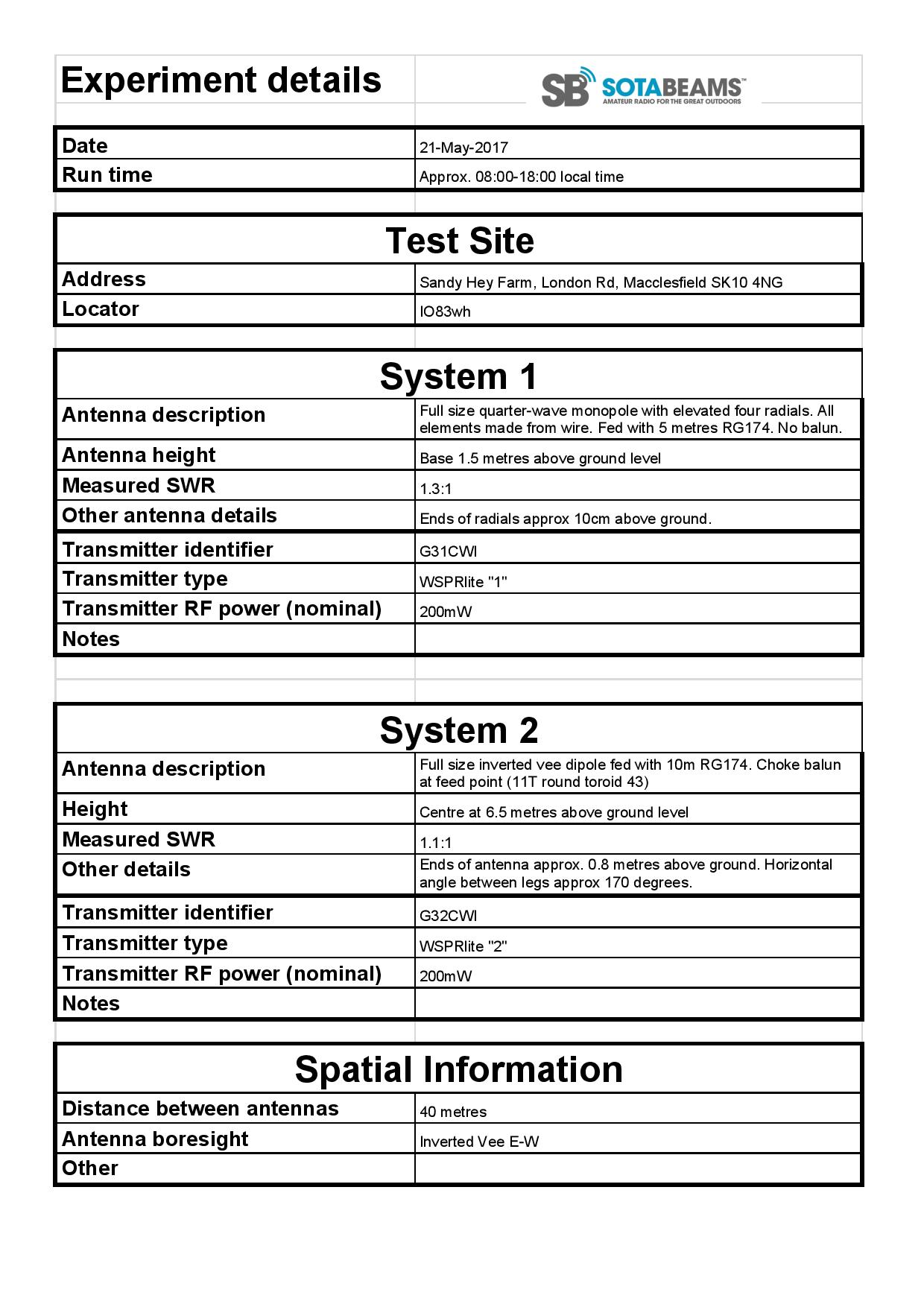
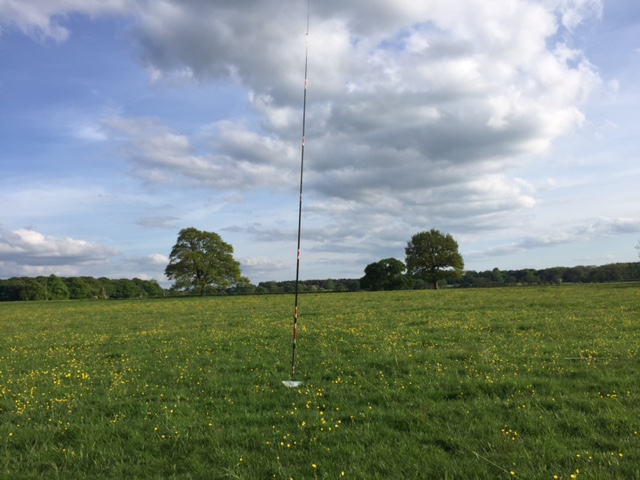
The quarterwave monopole
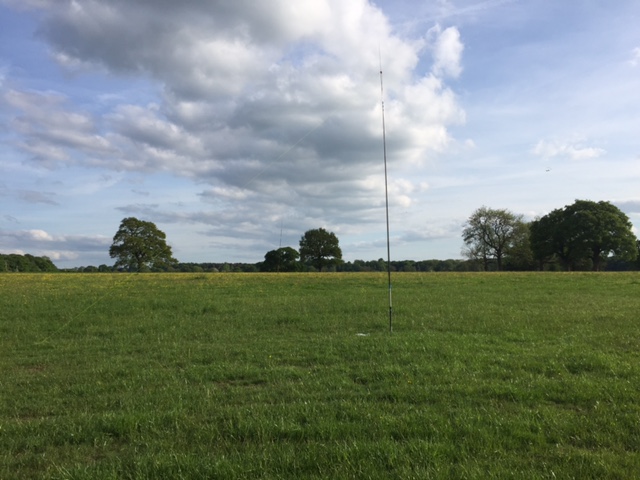
The inverted vee (monopole in background)
Results
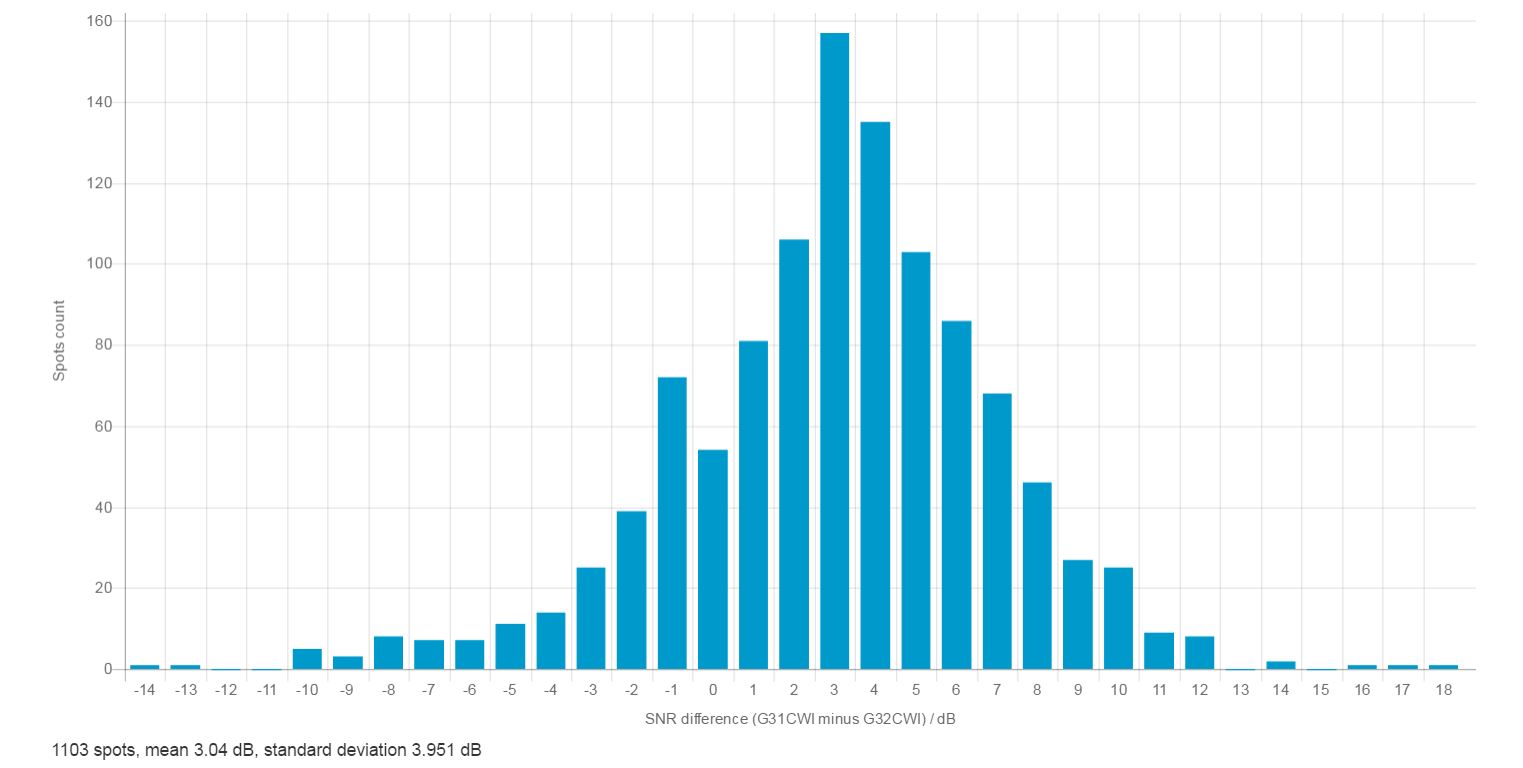
The histogram shows the distribution of all the simultaneous readings taken during the experimental period (N = 1103). Note: readings from stations less than 100km from the test site have been excluded as there was evidence to show that some of these were receiving the test systems by groundwave, causing a bi-modal histogram.
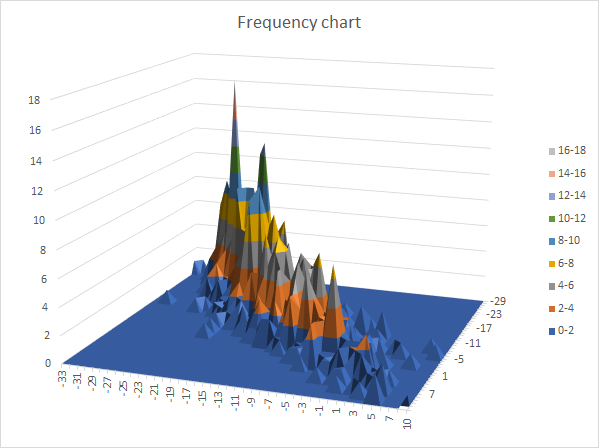
3d Frequency Distribution N=1103, results under 100km removed (Duffy 2017)
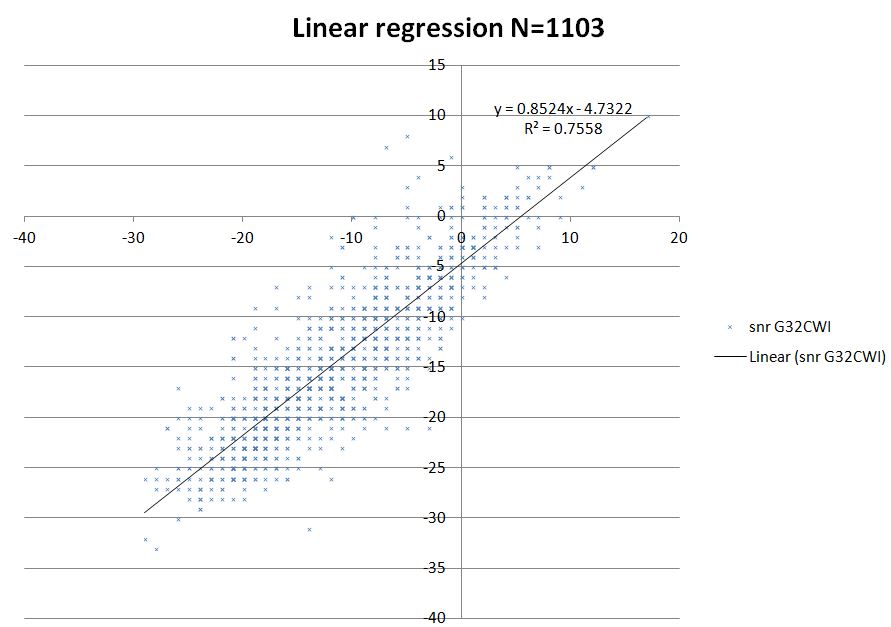
The linear regression of all readings from receiving stations > 100km from the test site.
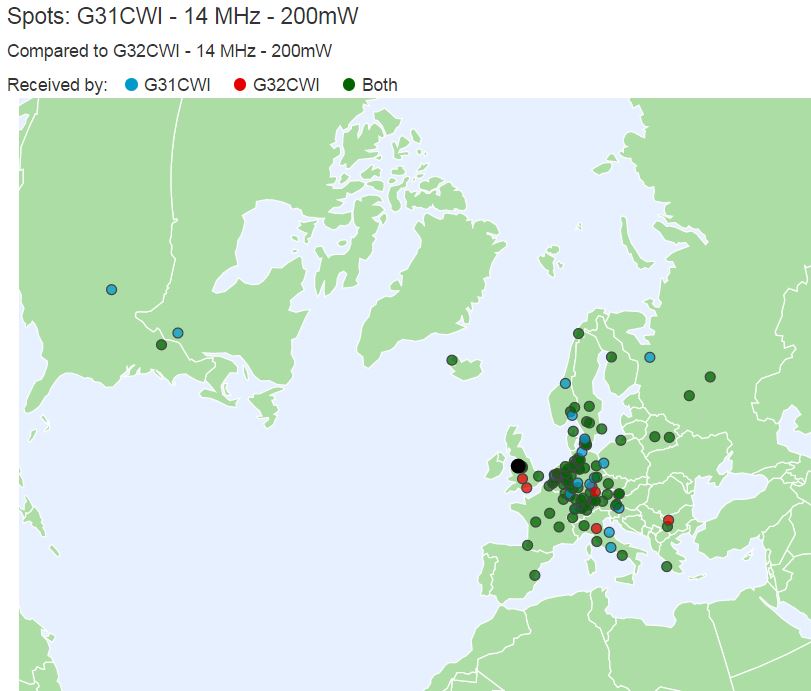
The map above shows the locations of all the receiving stations. Green dots show stations that provided simultaneous reading.
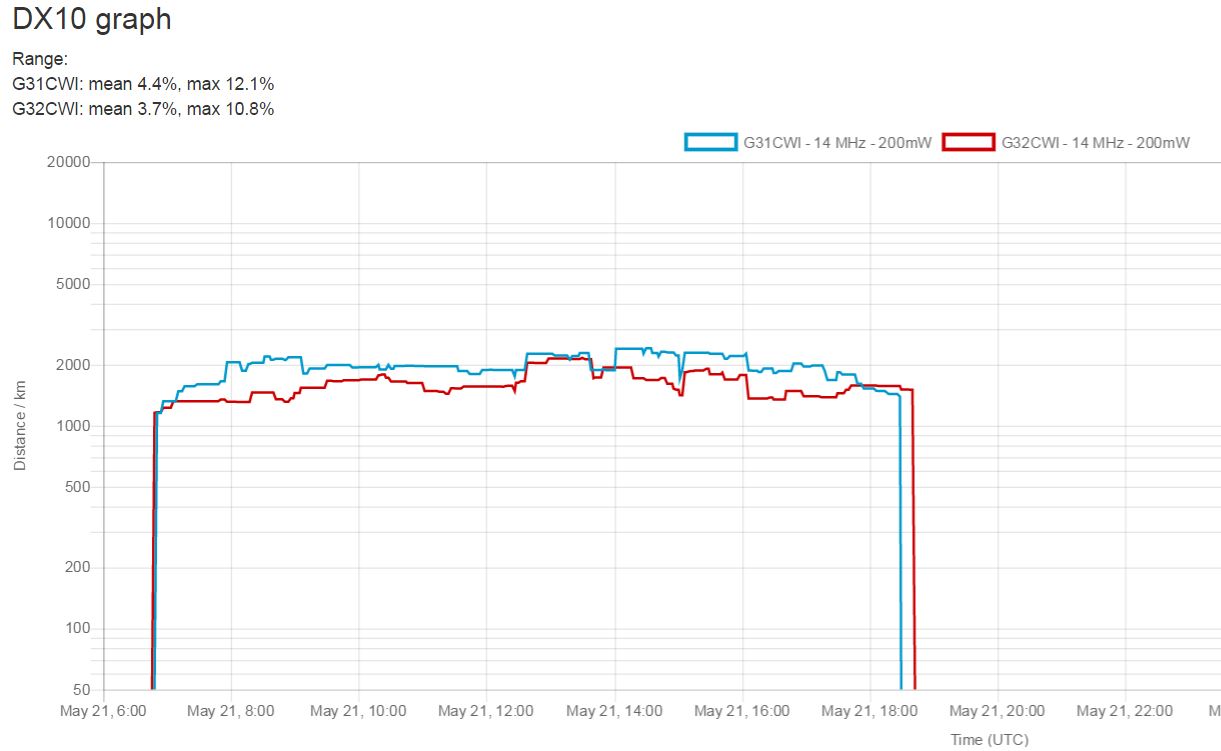
DXplorer.net also provides an alternative graphical way of analysing data (DX10). This showed similar results to the histogram (see above).
The full data set is available for other analysis. Note that receiving station G3CWI was 8km from the test site.
Click here to download the simultaneous dataset.
Discussion
Under the conditions of this test the quarterwave monopole outperformed the inverted vee dipole and showed an advantage of just under 5 dB (data from all ranges > 100 km from test site). Results have not been adjusted for differing feeder loss or TX power.
The full simultaneous dataset has been made available for possible meta analysis. If used for publication please credit "SOTABEAMS"


